Why is it that the chimpanzee shares more parts in common with me, than a dog? Well, some creationists appeal to common design, and that’s great as far as it goes, but common design doesn’t answer the question I just posed: Why is it that chimpanzee anatomy is much more like mine relative to that of a dog?
The following article has been reblogged with permission from Creation Unfolding. The views expressed reflect those of the author, and not necessarily those of New Creation.
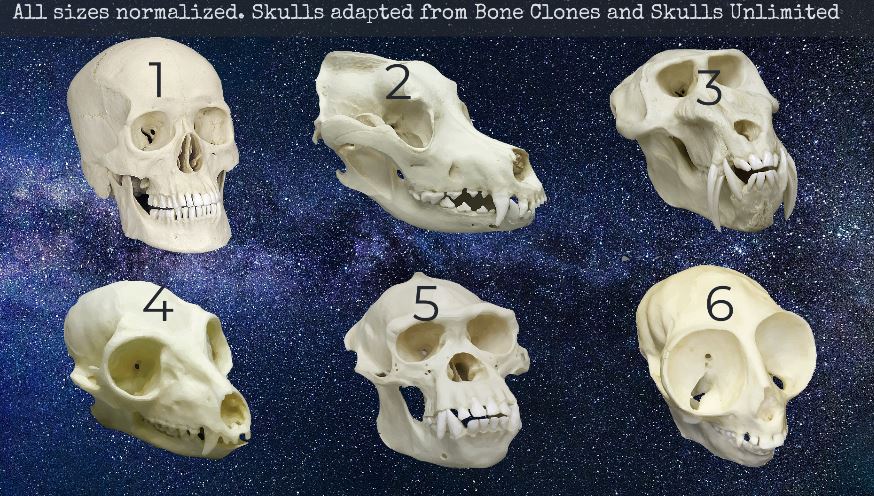
To emphasize this, compare the skulls in the first figure below. These skulls are randomly mixed together. Go ahead and choose the skull that you think is most like that of the human (skull 1). Now pick the one that is most unlike that of the human. More than likely you picked skull number 5 and then skull number 2, in that order. And I think this would be correct as skull number 5 is that of a chimpanzee and skull number 2 is that of a dog. Skull number 3 is that of a baboon, skull number 6 is that of an owl monkey, and skull number 4 is that of a lemur.
You will probably not be too surprised to learn that this sequence can be found in many secular textbooks to help fortify the belief that humans evolved from lower vertebrate groups. (See the second figure). Of course, this is only a first order approximation because in actuality, and according to modern evolutionary theory, these are all modern groups that each have their own primitive common ancestor.

But even so, this observation is real and, from a creationist perspective, I think needs an explanation. Why is it that the human skull is more like that of the chimp than it is to the others? Now, don’t get me wrong. There is a definite difference between the human skull, and say, that of the chimpanzee. (And in fact, many creationist articles tend to overly emphasize this). But this difference doesn’t remove the apparent continuity that exists between these skulls and the fact that this thread of continuity seems to converge towards the plan of the human skull. Adding the skull of a capybara (figure 3; image adapted from Bone Clones) helps to emphasize a real thread of discontinuity that exits within the continuities.
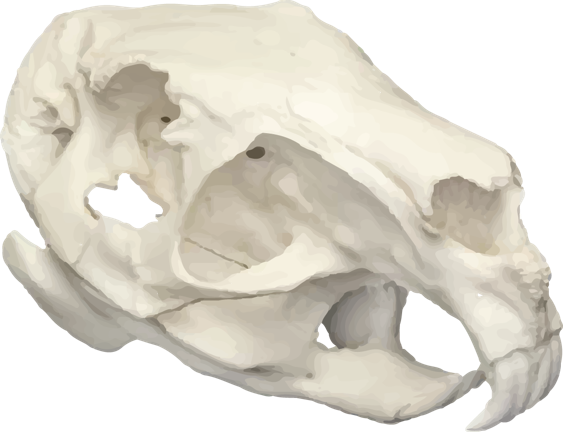
Of course, the secular community explain this connectivity in terms of descent with modification, or Darwinian Evolution. And, I can see why they might join the dots in this way. But how are Christians to explain these data? Common design or a common designer tends to be the default Christian explanation, but is this a robust apologetic? Think about it, what does “common design” mean anyway? Yes, I think common design can answer questions about why all vertebrates have two eyes, or why DNA replicating machinery is very similar across the entire spectrum of life, but that doesn’t answer questions about shared anatomy when the anatomy in question goes beyond the realm of function. Vertebrates may have two eyes because this number of eyes is functionally superior for life than say, 3 or 1. But why do all of the primate skulls move towards a plan that resembles that of the human, and one that is markedly different than that of the dog and certainly the capybara? The answer cannot be a functional one dependent on habitat, as humans have always lived on the ground while primates live much of their lives in trees.
I mean, from a purely functional perspective, God could just have well as made the human skull unique, a one-off that looked nothing like any other animal. Some might object and say that God, for whatever reason, just wanted to make some animals that looked similar to humans. And with this I agree. But notice that this reason has got nothing to do with the way these creatures functioned. To say that God designed a creature to look like a human is to suggest that God specifically used the human body plan to design these primates (see figure 4), something He did not do when designing, for example, the capybara. This kind of design is called “structuralism” because the design is based on a previously existing structure. Humans do this all the time when they design cars. The SUV design, for example, is derived from the structural design of a station wagon. Automobile creators did not sit down and derive the SUV design from a motorcycle (See figure 5).
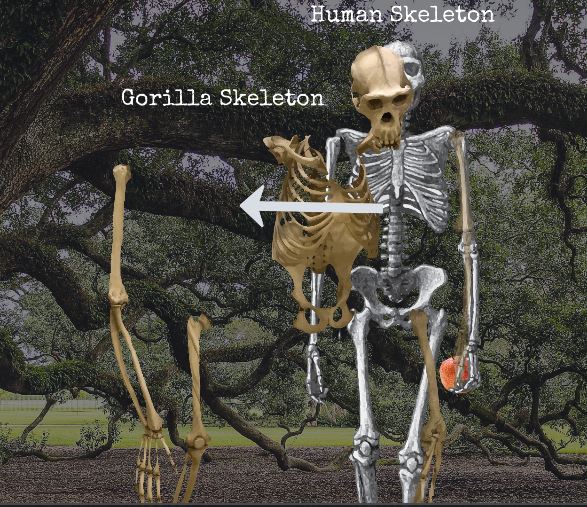
The fact is, that when we compare the bone structure and morphology of the primates, as well as that of recent hominid finds, there is no escaping an underlying structure that is common to all of them.
Charles Darwin explained this structural continuity in terms of descent with modification, and ever since then Darwinian evolution has rallied around this phenomenon. I’ll provide some more basics on how I think creationists should respond in part II.


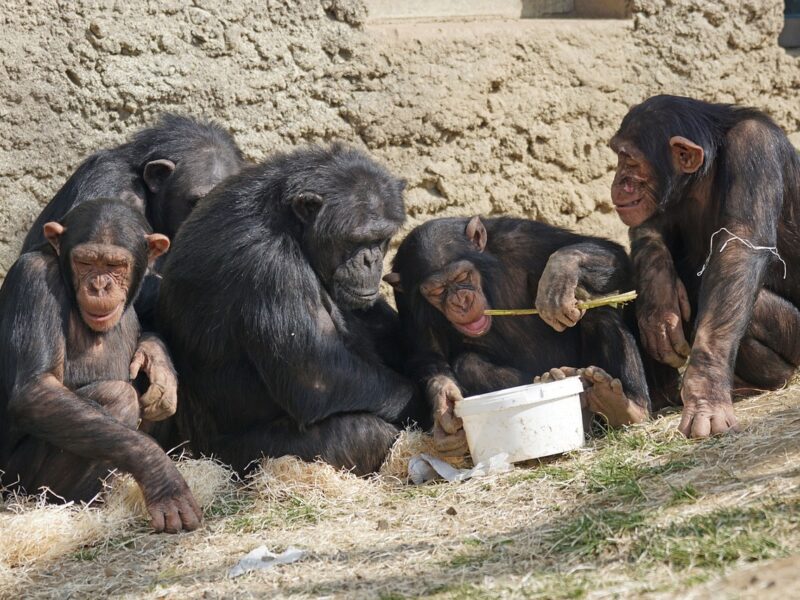


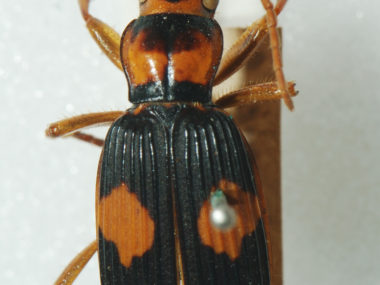


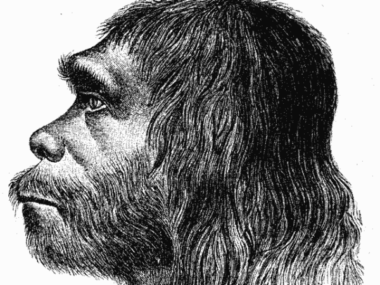




Amen. Indeed right to punch home how much man looks like primates. WE do have exactly the same bodyplan as primates. Finding differences is a vain attempt to find difference to justify being a different kind.
therefore God creating primates first copied that bodyplan for people who were created last.wHY/ simple. The identity of kinds is represented, pre fall, in thier bodyplans. However man uniquely was made in Gods image. Our soul. So our body can not reflect our true identity. Plus in the biologu common blueprint everything is alike very much. SO we alone jave a bodyplan unrelated to who we are. We alone have a bodyplan we are renting from another critter. We are the only one. creationists must agree we are the only one.The best one there is in biology for fun and profit. sorry to octopuses. our primate bodyplan to creationists and everybody should be seen as evidence for being unlike all other living things. its a simple equation. God could not have his own unique body in the biology boundaries there is. even five heads and nne legs would not do it and nyways some insect somewhere could sue.
Newcreation website believes in a literal; twenty-four hour; seven day creation. Why the use of the unbiblical term “hominid”? (“recent hominid finds.) That’s a word Hugh Ross uses in his seriously compromised “theistic evolution” books. Essentially; “soulless creatures; on their way to becoming ‘men.’ ” What gives? There is no room in Genesis for these pre-men; vacuous “creatures.” Have I misunderstood?
Thank you for your feedback. Using clear language is always important. However, we think that in this case it is clear that Dr. Coulson was not using the word hominid in an evolutionary sense. Evolutionists use the word hominid to refer to humans and our supposed relatives, the great apes. Coulson appears to have used the word simply in an anatomical sense. Hominids are a group in so much as they share certain features, and are more similar to each other than to other creatures. There is a precedent among creationists for classifying humans in a group with apes, as Carl Linnaeus did. This is not to suggest they are related, but rather to highlight certain anatomical similarities.
Hi Brian, as the editor states below, I am merely using the scientific language. I don’t believe in “soulless creatures” like Hugh Ross does. Man was created on the sixth day, and there were no “soulless” human-like people walking about.